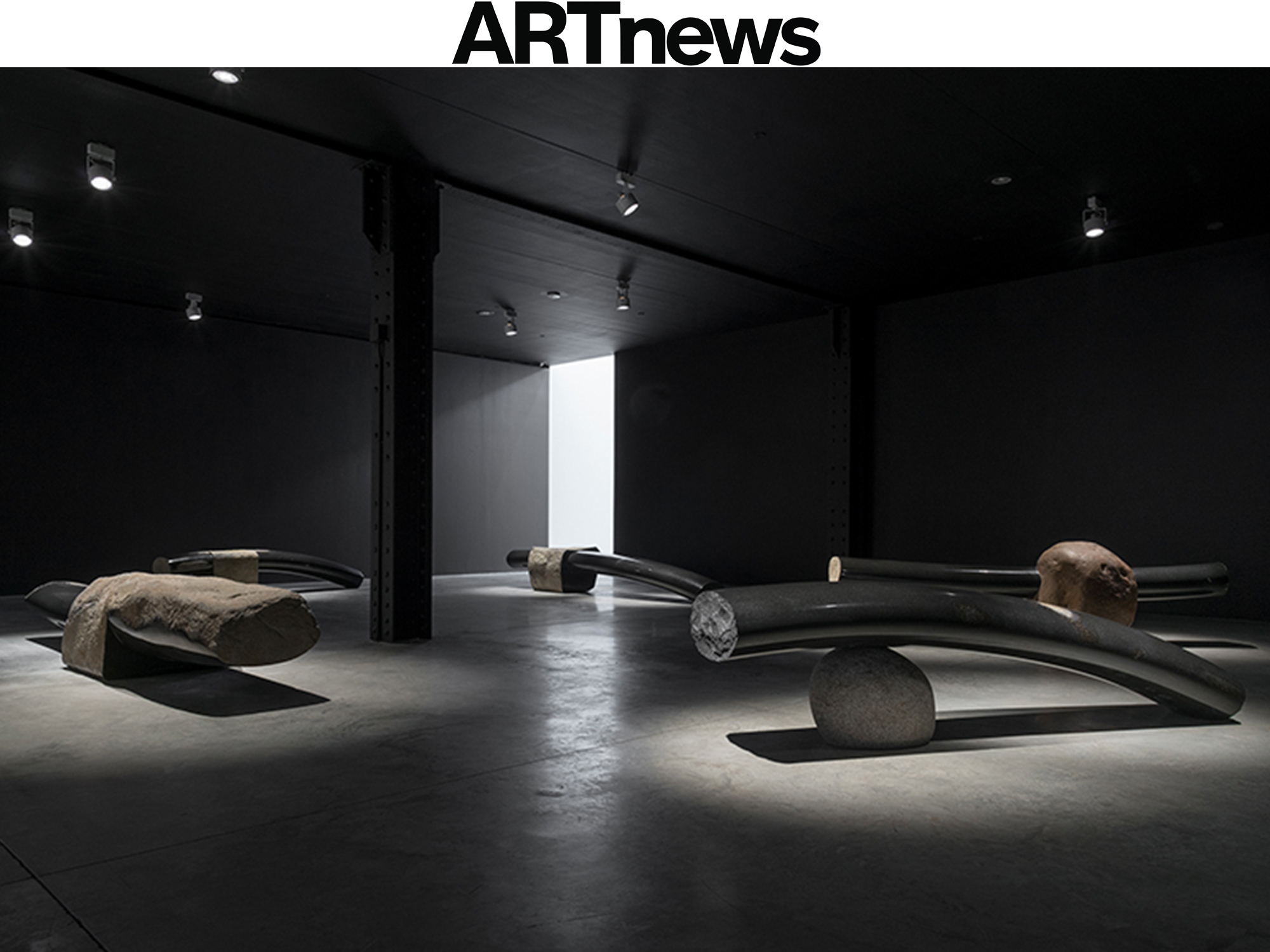By Frances Vigna
Near-perfect combinations of minimalist form and utilitarian function, Byung Hoon Choi’s works are inspired by the biomorphic shapes found in nature and in landscaping, as well as the ideal forms of philosophy, Korean tradition, and the works of 20th-century sculptors Barbara Hepworth and Isamu Noguchi. Choi favors clean silhouettes in natural materials such as wood, clay, and stone. For this show the artist-designer exhibited ten sculptural basalt benches that balance organic and constructed arrangements.
Each of the three rooms held a group of works that seemed to progress from those in the other rooms, with the result that the whole show felt like a continuum in the evolution of a species. Within each space, one could observe stages in the development of individual organisms.
Five works lay tranquilly in the dimly lit first gallery, suggesting a nest of hibernating animals. The sculptures coupled unfinished rock bases with highly polished stone curves that recalled the quick brushstrokes displayed in the preliminary sketches hanging near the gallery entrance. Half interred, the smooth basalt shapes seemed to emerge from their roughly chiseled shells like Paleozoic creatures coming out of the water.
In the following gallery, two benches evoked the metamorphosis of an insect from larva to adult. Grounded in raw basalt bases, similar to those in the previous room, these works featured serpentine forms doubling over on themselves as if unfurling from cocoon-like casings.
Finally, the gallery opened up at the back to reveal three works composed of gleaming, delicately poised lines of basalt. In afterimage of beginning 013-400 (2013), two lines intersect, creating a graceful, infinite loop. Here, Choi’s designs were freed from the heavy bases seen in the previous pieces and rested serenely on the gallery floor. All of the designer’s ideas about craftsmanship, ideal forms, beauty, and nature culminated in these few works, which appeared to slumber, unaware of their beauty.










